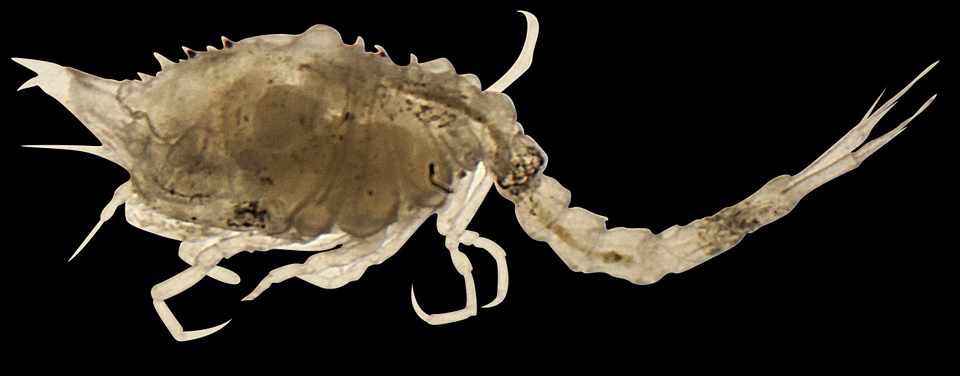New Findings in the 'Twilight Reefs'
New species of crustacean discovered in thriving mesophotic ecosystem.

One Tiny Crustacean
A line drawing of the newly-discovered (and very tiny) Cumella pagani, found in the sediment of a mesophotic ecosystem. The creature measures around .08 inches in length. Mesophotic — 'middle light' — is the dimly-lit area of the ocean found between around 100-300 feet . Corals found in these deeper parts of the ocean may offer hope for shallower, degraded reefs.
Recognizing his contributions to NOAA-funded coral reef research, a University of Puerto Rico scientist will have a new species of a sediment-dwelling crustacean named in his honor.
The new species, named the Cumella pagani n. sp, is a cumacean crustacean that lives on the Caribbean mesophotic coral reefs studied by Dr. Francisco E. Pagán. Cumaceans are small, benthic marine crustaceans, common in muddy and sandy sediments.
Little is known or understood about mesophotic coral ecosystems because these areas are hard to reach. Mesophotic corals live in a region that is often called the "twilight zone" of the ocean, roughly 100-300 feet deep, where light barely penetrates.
Scientists are studying mesophotic corals as potential sources to reseed or renew shallower coral reefs as well as important habitats of many fish species. Bringing to light the existence of healthy mesophotic coral ecosystems provide insights on the devastating declines and opportunities for management and restoration of both shallow-water corals and the newly-recognized mesophotic ecosystems.